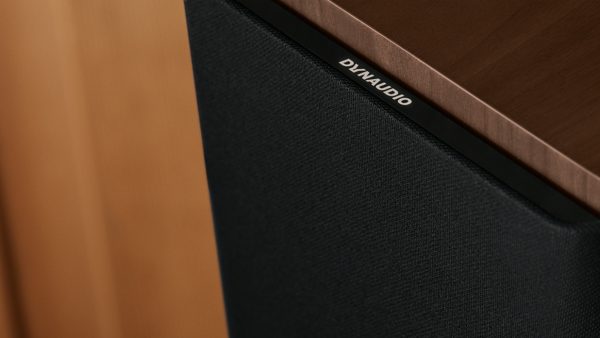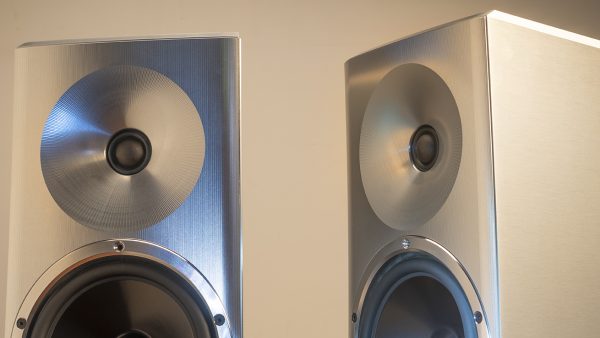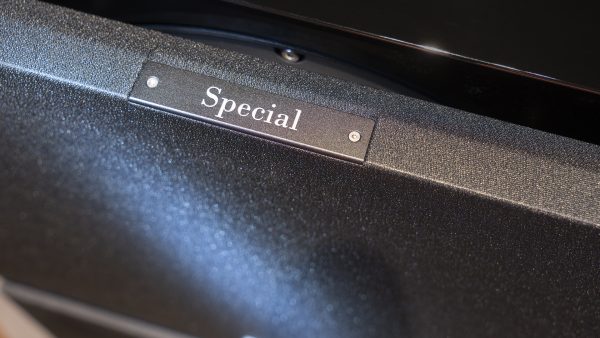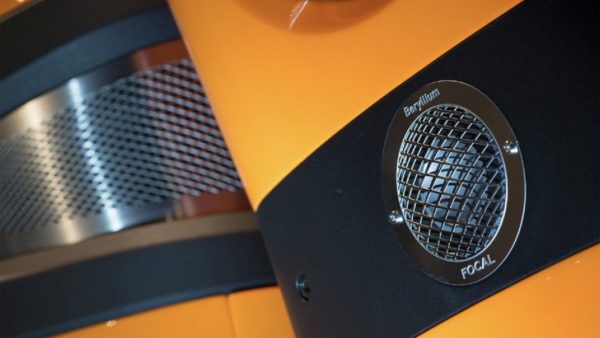Sometimes it’s better to be single.
My bull terriers are incredible watchdogs, paying attention to the slightest thing that sounds different around the house. The second they hear something anomalous, those ears perk right up. That’s what happened here when Ken Songer played “Thanks to You” by Boz Scaggs on the S1X speakers. Even way off-axis, my ears perked right up. The level of exquisite, natural tonality got me to stop what I was doing and move front and center.
Truth told, some of this is the incredible synergy between his speakers and his A3, 300B integrated amplifier. The dCS Vivaldi was used as a source, and later, I’d play many records. However, this combination, right here and now, is by far one of the most musically engaging setups I’ve had the pleasure of hearing. I got next to nothing done after Ken left that day. Just sat around playing records all day. That’s when you know you have a winner.
Conrad-Jonson trademarked the phrase “It just sounds right,” but that catchphrase easily applies here. If you stop thinking about the specs and measurements – stop being an audiophile for a minute and dive into what these single-driver speakers have to offer – I think you’ll agree that it’s a rendition of sound like few other speakers deliver.
Every speaker, regardless of its cost, is a series of compromises because it is a fixed, mechanical device, unlike our eyes and ears, which rapidly adapt to changing conditions. As a result, a speaker designer must concentrate on the parameters they feel are most important to convey the music to the listener.
The single driver difference
Where a full-range electrostatic speaker is exciting in the way that it delivers a highly coherent sound field, they usually can’t produce the same amount of dynamic impact as a cone or horn speaker can. On the downside, the difference in materials between low, mid, and high-frequency drivers, combined with potential distortion and phase errors dividing the speakers, can often lead to a less-than-engaging presentation. If you recall all of those speakers you’ve heard that sounded compelling at a hifi show or in a dealer showroom, playing 90 seconds of a track really loud, but then not so much when you were listening at home for about 20 minutes, you know what I mean.
Some speaker manufacturers do a much better job of eliminating most or even all of this, but they are either large and expensive or small, with the same limitations of a panel to an extent. Think of all those great British BBC monitors that sound beguiling, provided you aren’t listening to the Scorpions or Public Enemy.
Single-driver speakers are unique in that they have no crossover network, eliminating many of the common issues, butthey have their own limitations. Most often, it’s a lack of bass drive, and to a lesser extent, a limited dynamic range. One cone can only move so much air. While some utilize a huge horn enclosure to augment the driver, Songer has a relatively large and heavy enclosure with a front port. He claims a frequency response of 27Hz to 20KHz +/- 6dB. In my 24 x 36 foot room, I never felt that these speakers lacked low-end grunt, even when playing fairly heavy music.
The Songer difference
Yet, the Songer S1X manages to sidestep these limitations better than any single-driver speaker I’ve ever experienced. The secret? Incredible refinement, painstaking attention to detail, and meticulous execution. Just as a Singer automobile or a Richard Mille watch requires so many more hours to build than a standard “watch” or “automobile,” so it is with the Songer S1X speakers. This is why they offer a level of musical engagement that few speakers at any price can match. Taking this approach even further, the Songer 10-inch driver is a field coil design. Instead of relying on a traditional magnet, as nearly all speaker drivers do, using an electric field delivers more control over the delicate cone, as well as allowing the ability to fine-tune the actual bass response of said driver, with slight adjustments in the voltage delivered to the magnet. If you prefer a more vintage ’50s sound, that merely requires a change in the power supply’s voltage. Going the other way with the power supply brings a more modern rendition. Think of it on one level as a subtle tone control.
Taking this approach even further, the Songer 10-inch driver is a field coil design. Instead of relying on a traditional magnet, as nearly all speaker drivers do, using an electric field delivers more control over the delicate cone, as well as allowing the ability to fine-tune the actual bass response of said driver, with slight adjustments in the voltage delivered to the magnet. If you prefer a more vintage ’50s sound, that merely requires a change in the power supply’s voltage. Going the other way with the power supply brings a more modern rendition. Think of it on one level as a subtle tone control.
While this technology is a throwback to the early days of Western Electric, nearly 100 years ago, at the beginning of the theater era, Songer is not alone in adopting this tech. Focal uses field coil woofers on their two top Utopia speakers to excellent result. Voxative, Treehaus, and Audio Note all have field coil offerings. However, the Treehaus speakers use a DSP, and the Audio Note speakers (recently reviewed by Ken Micallef in Stereophile) are a two-way design with a dome tweeter.
I’ve heard all these speakers, and while compelling in their own way, mixing something else into the cake batter merely takes away from the purity of the end result. To be clear, this is my highly biased opinion, but the Songer S1X reveals music in a way that is unlike anything I’ve ever heard. The combination of clarity, smoothness, and resolution is just wonderful.
At $45,000 a pair, these speakers are not inexpensive, but other than the Treehaus offering, they are less expensive than all the rest. Considering their 95dB/1-watt sensitivity rating, you won’t need a ton of power to play music at realistic levels, but, like my Quads, you will need to find the right amp. Of course, the easy solution is to buy Songer’s amp too and call it a day. The older I get, the more I like once and done solutions. I’m going to stick my neck out and guess that if you’re in the market for something like this, you’ve probably lived with and heard quite a few things, so you’re zeroing in on “the sound.
Back to the refinement
Every aspect of the S1Xs construction is performed by hand, except for winding the field coil solenoids, which are painstakingly created, one layer at a time, by a company in California for Songer. There was a day when he did this delicate operation as well, but it proved too much for his wrist joints. Finding his current partner in this crucial step of the operation brings even better quality and consistency to the final result. 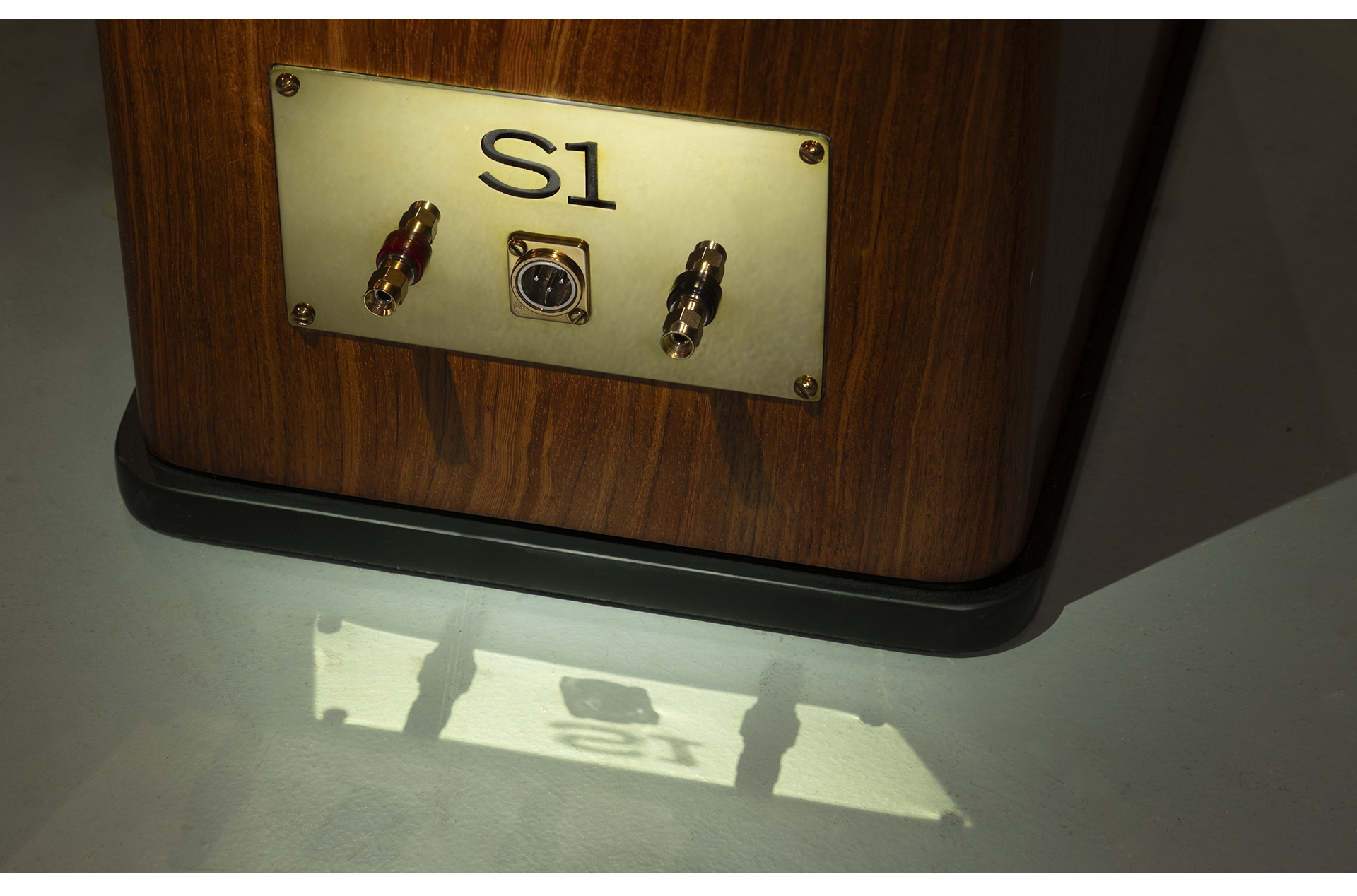 The finished drivers are matched to .01dB, a figure unheard of in any industry. This is the most refined, complex, and exacting part of the process. The glow of the soft white cones is a result of the Japanese Washi paper used. Songer says it uses a mulberry fiber structure with a “cloth-like quality much like currency.” Each cone is hand-sanded so that their weight is as close to identical as humanly possible. These tweaks are what give the S1X such a delicate voice. These cones are each less than 7 grams, yet they maintain the necessary stiffness to deliver real bass response. And this is a proper 10-inch driver, with an entire moving mass of less than two ounces.
The finished drivers are matched to .01dB, a figure unheard of in any industry. This is the most refined, complex, and exacting part of the process. The glow of the soft white cones is a result of the Japanese Washi paper used. Songer says it uses a mulberry fiber structure with a “cloth-like quality much like currency.” Each cone is hand-sanded so that their weight is as close to identical as humanly possible. These tweaks are what give the S1X such a delicate voice. These cones are each less than 7 grams, yet they maintain the necessary stiffness to deliver real bass response. And this is a proper 10-inch driver, with an entire moving mass of less than two ounces.
For those screaming “why so expensive,” the amount of handwork that goes into a pair of Songer speakers, with constant measurement and double-checking every single step, is why.
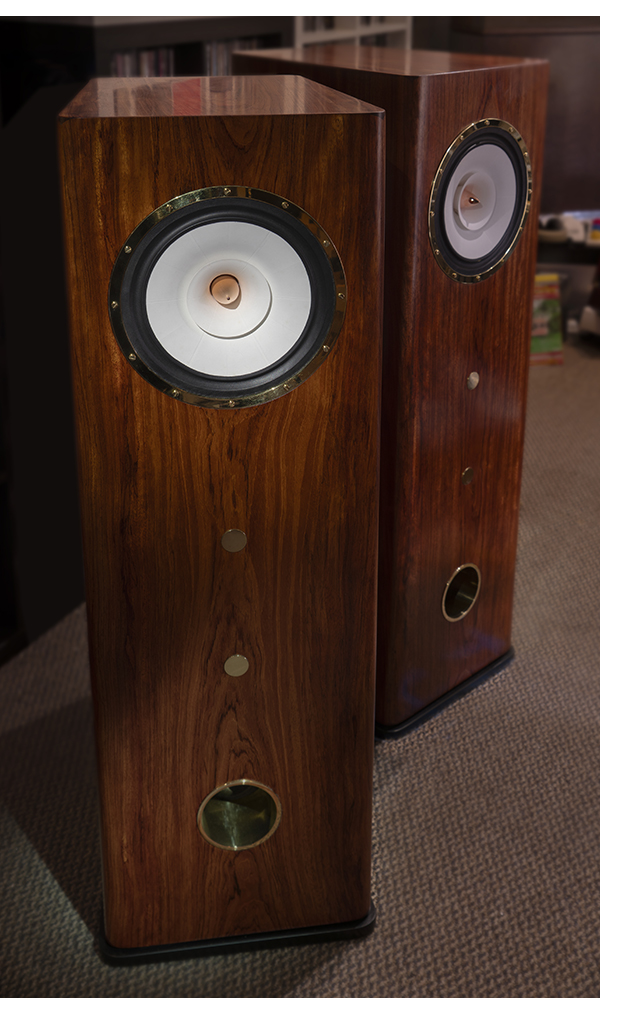 More listening
More listening
They are unlike any single driver speaker you’ve heard. Delicate highs, swimmingly dimensional midrange, and bass response, that unless you are playing techno tracks at club volume, you will not be wishing for a subwoofer. And the quality of the bass delivered is lifelike and natural.
That said, using the S1Xs with my six-pack of REL S/510 subs made for an experience that few combinations can match. With a gentle crossover in the upper 30Hz region, the RELs move the air that the Songers can’t, while taking nothing away from the rest of the range.
Please note that this is an acknowledged personal bias. Once you get used to a six-pack of REL’s, nothing else has enough bottom-end weight and depth. Taking my bias out of the equation, the Songers are just fine on their own. They never sound thin or lightweight. I’m also sure part of this was using the S1Xs in a 24 x 36-foot room – a room larger than what they are designed for. If they weren’t 140 pounds each, I probably would have given them a go in my 13 x 18-foot living room, but with those inquisitive dogs, there’s nowhere to put that 300B amplifier.
Even in the big room, these speakers come to life beautifully. In addition to their incredibly fast transient response, which always makes for a non-fatiguing listening session, they resolve so much fine detail and tonal texture that you’ll be digging out all of your favorites to go for a spin. So while you may question a $45,000 pair of speakers, if you’ve even got a few thousand albums, or a few times that saved in your digital library, it’s pretty easy to amortize.
You’ll notice this instantly when listening to your favorite vocal tracks. Every audiophile cliché applies here. You can even hear the singer’s tonsils expand and contract. Just kidding. But you can listen to the breathiness in vocalists who sing close to the microphone. It’s easy to hear every single part of the action on the piano’s hammers as they strike the strings, and the soundboard resonates. And you can easily hear the difference between different electric guitar setups. This is the difference between great sound and being fooled into thinking that you are approaching the intimacy of a live performance. No, they won’t capture the complete hall realism of Deep Purple in Japan at 135db – but when you are listening to moderate scale music in a more compact venue, it’s darn convincing.
More amplifiers
Hands down, the Songer amp provided one of the best combinations with the S1Xs. Ironically, my reference Pass XS 300 monos were different but equally good. However, I don’t think anyone would make this pairing – but it was there. The new First Watt F5 monos from Pass were also excellent but very different. They deliver more bass grip than the Songer 300B, with more punch, but lack about 15% of that beautiful “reach out and touch it” that is only conveyed by a single-ended triode. However $11,000/pair vs. $35k and no tube headaches.
On the budget side of the fence, the PrimaLuna EVO100 with EL34s was nice, but less resolving everywhere – and a touch noisier. Still at $3,295, not a bad way to get into tubes and start a Songer-based system. Stepping up to the Canor Virtus I2 with KT88s produced a bigger, tube-like sound, but again, not as much inner detail as the Songer amp.
In the middle of the review, the Western Electric 91E 300B integrated amplifier arrived. While I had high hopes here, this one’s a Danger Will Robinson combination. I’ve gotten good results with a few other speakers, but not with the Songers. Bass is nearly non-existent and poorly defined. If you have the WE amp, these are not the droids you’re looking for.
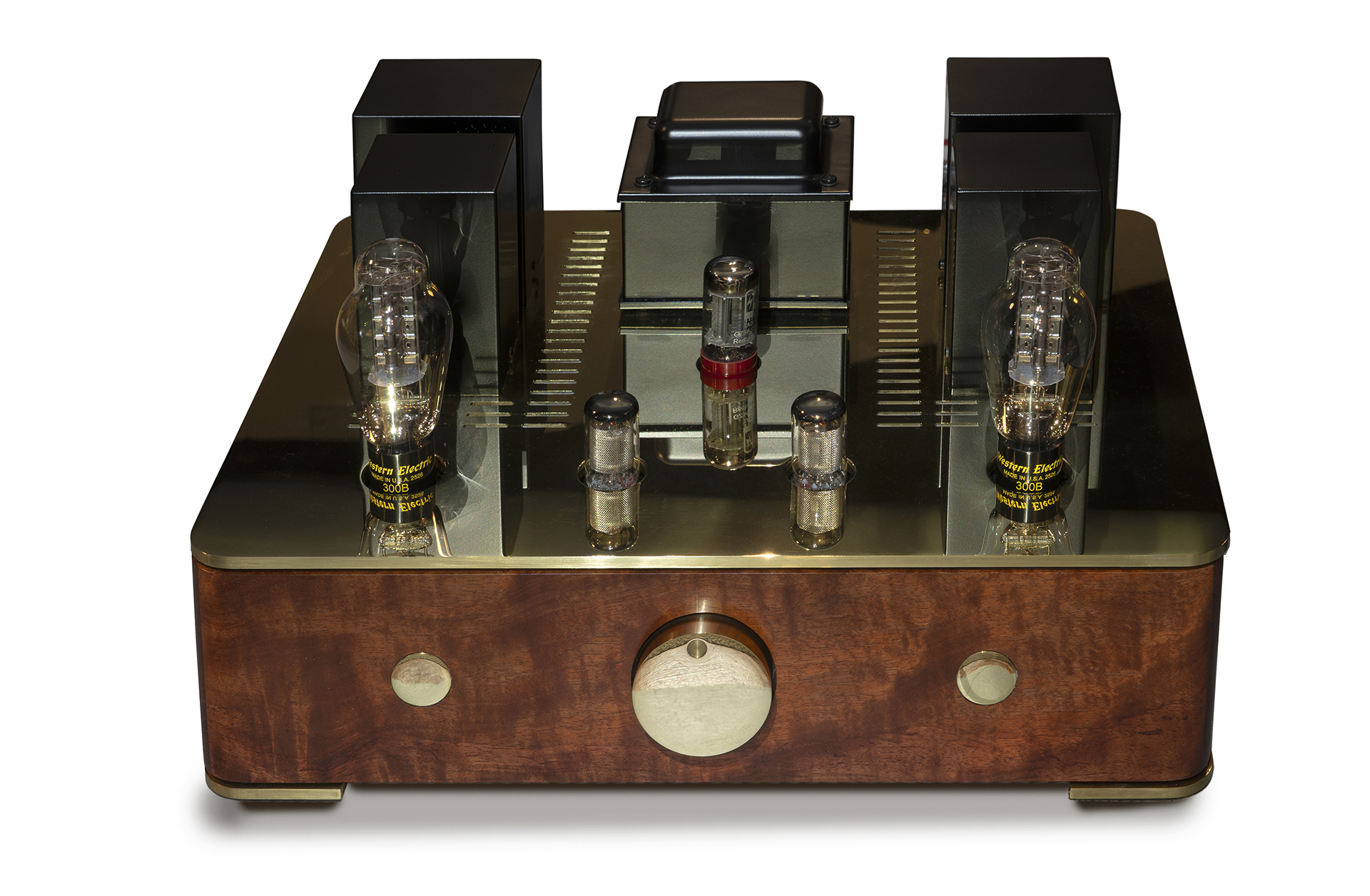 I also had mediocre luck with my Finale EVO300B integrated. This is a nice 300B amp overall, but that Songer amp is just so damn good. The Finale amp is $25,000 less, but this merely illustrates how much fine detail the Songers can resolve. Every component change, every cable change was easily revealed with the Songer amp/speaker combination. Had Ken not dropped off his amplifier to use with the speakers, I would have been perfectly happy with the EVO amp and WE300B tubes installed. As the saying goes, “you can’t unhear it.”
I also had mediocre luck with my Finale EVO300B integrated. This is a nice 300B amp overall, but that Songer amp is just so damn good. The Finale amp is $25,000 less, but this merely illustrates how much fine detail the Songers can resolve. Every component change, every cable change was easily revealed with the Songer amp/speaker combination. Had Ken not dropped off his amplifier to use with the speakers, I would have been perfectly happy with the EVO amp and WE300B tubes installed. As the saying goes, “you can’t unhear it.”
An all-time favorite
As enthusiastic as I am about these speakers, I still don’t think I’m doing them justice. I could easily become a fanboy for the Songer speakers, but then you’d never believe me. I honestly feel that even if you have zero interest in this kind of speaker, these are one of those “top ten speakers you should hear before you die” kind of speakers. The experience may make you rethink your sonic priorities.
Personally, I think 60-120 seconds with the Songer S1X speakers will provide you with enough of a paradigm shift as to what recorded music is capable of sounding like, if you don’t start thinking about how to get a pair, you’ll definitely never forget them. I hope upon hearing them, you enjoy them as much as I have.
The last track I play before boxing them back up is “It’s Raining,” from Boz Scaggs’ new album, Detour. And while it was sunny the day we loaded the speakers into Ken’s SUV, it rained all day the next day. -Jeff Dorgay
$45,000/pair
songeraudio.com
Peripherals
Preamplifier Pass Labs XSPre
Power Amplifiers Pass Labs XS300 monos, First Watt F5 Monos, Songer A3 integrated, PrimaLuna EVO100 integrated, Cantor Virtus I12 integrated
Digital Source dCS Vivaldi ONE with Vivaldi Clock
Analog Source SME 20 w/Hana Umami Red
Cable Cardas Clear and Clear Beyond

